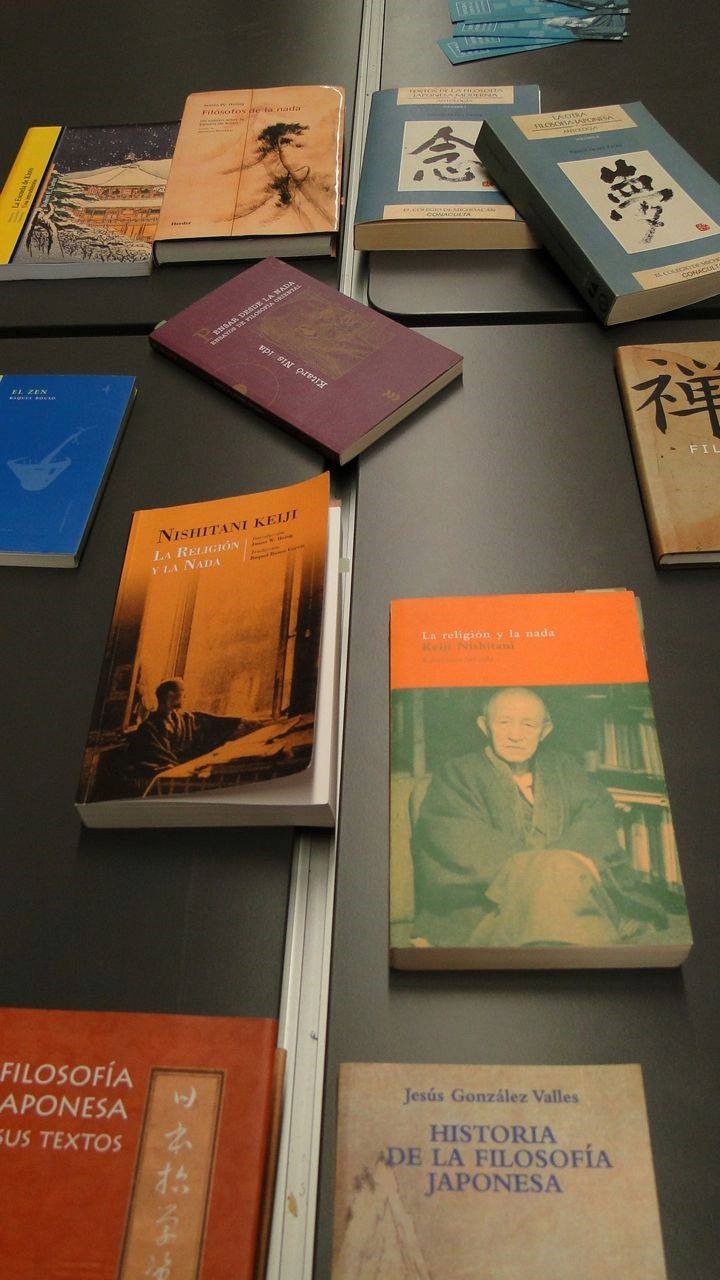
Keiji Nishitani: the transition from Western nihilism to Eastern emptiness.
The Kyoto School opens up new horizons and illuminates unknown aspects of Western philosophy itself. It is an example of the mutual fertilization that I consider the “cultural imperative” of our historical situation. We cannot breathe much longer within the increasingly rarefied atmosphere of a single culture, however global it may claim to be. As the example of the Kyoto School makes clear, philosophy is nobody’s monopoly. It is not a matter of proposing “one” (only) philosophy as “world philosophy” but of claiming the rights of “the” philosophy for the whole world.
- Raimon Panikkar, Foreword to James W. Heisig, Filósofos de la nada. Un ensayo sobre la Escuela de Kioto, Herder, Barcelona, 2002.
Since the opening of Japan to the West at the end of the 19th century, this Kyoto School began to take shape, although it invited Western authors to give lessons in its philosophical tradition, but above all it began to send students to study in Europe with professors such as Husserl and Heidegger, among others. This exquisite marriage of Western thought and Christianity with the roots and context of Japanese Zen Buddhism gave rise to several generations of original thinkers: Kitaro Nishida (1879-1945), Hajime Tanabe (1885-1962), Keiji Nishitani (1900-1990), Shizuteru Ueda (1926-2019).
Western interest in this school has been increasing in recent years. Also in the Spanish-speaking world with a series of recent translations and monographs, although the first work by Nishida, the father of this family and inspirer of the school, Ensayo sobre el bien [1911], Revista de Occidente, Madrid, 1963, was published more than fifty years ago.
But it is its third representative -a student of Heidegger- who is the most responsible for the growing interest in this school and with a text that some have considered as one of the most important of the 20th century -of “the” philosophy for all that Panikkar claims- which is the one chosen for the work of the seminar of this course:
- Keiji Nishitani, Shūkyō to wa nani ka [What is Religion?], Sobunsha, Tokyo, 1961; modified and expanded in English Religion and Nothingness, University of California Press, Berkeley, 1982; and in German Was ist Religion? Insel, Frankfurt am Main, 1986; and taking up the title of the English edition, the Spanish La religión y la nada, introduction by James W. Heisig and translation by Raquel Bouso, Siruela, Madrid, 1999, with reprint in Japan corrected by the translator, La Religión y la Nada , Chisokudo Publications [Studies in Japanese Philosophy, 15], Nagoya, Japan, 2017.
Nishitani is a paradigmatic example of inter-fertilization of diverse philosophical cultures. In the introduction Heisig says: “The strong impression he received from reading Thus Spake Zarathustra in his university years left him with deep-seated doubts. As an academic he translated and commented on works by Plotinus, Aristotle, Boehme, Descartes, Schelling, Hegel, Bergson and Kierkegaard, all of whom left their mark on his thinking. But when he read Nietzsche, and also Eckhart, Dōgen, Hanshan, Shide, the Zen poets and the New Testament, he did so through the lens of his own eternal spiritual questions.”
In fact the original title of the book is a question, and the question present in every page of the book in search of an answer is: how to pierce contemporary nihilism? A philosophical but fundamentally existential and spiritual question. For Nishitani, traditional ontology is incapable of overcoming the merely theoretical point of view, and a radical metanoia is necessary to go beyond the field of nihility, of the nothingness that we have discovered behind every representation, be it sensorial or rational. We represent reality as objects, as things because we want to hold and possess it, although paradoxically, this theoretical man, although representing it, moves away -distance between subject and object, separation of ontology and epistemology. Fear of reality? (Nietzsche). Thus Nishitani discovers the foundation of the theoretical man, of representation: desire, affection and ultimately “the will to power”.
One of the contributions of the Kyoto School of contemporary Japanese philosophy is to have questioned the limitations of a human consciousness reduced to forms of consciousness merely in terms of subject-object. […] Before our epistemological (subject/object) knowledge there is ontological consciousness. This may be the task of the “intellectus”, “new” or spirit, as opposed to the “ratio”, “dianoia” or mind.
- Raimon Panikkar, El ritme de l’Ésser (Opera Omnia Raimon Panikkar, X.1), Fragmenta, Barcelona, 2012, p. 586, 366.
As Nishitani reminds us, the Zen master Dōgen insists that there is “just sitting” (za zen) and “dropping body and mind” to open ourselves, from nihilitude to the field of emptiness (śūnyatā). With the body and mind dropped, the theoretical man is deconstructed, annonates, disappears, and with him desire and affection; then emerges the infinite openness of the field of emptiness; a field that is beyond all fields, that is absolutely transcendent, but at the same time is the closest, the most intimate, the most proper of all things, the absolutely immanent. The field of śūnyatā is the open adual (advaita) space that makes every field and every thing possible. It is a field in which we cannot arrive because we have never left, and it is that which cannot be attained because we have always been:
The field in which all things are self-sustained is none other than that of “śūnyatā” which, having broken through nihility, opens up as an absolute hereafter. In the field of “śūnyatā” each thing manifests itself in its selfhood in the act of affirming itself according to its own particular potential and “virtus” and with its own determinate form. For us, as human beings, returning to that realm entails, at the same time, an elementary affirmation of the existence of all things (world) and an elementary affirmation of our own existence. The field of “śūnyatā” is none other than that of the great affirmation.
- Nishitani, La religión y la nada, p. 204.
A dense reading, with a slow tempo and a transforming depth; this is how many members of the seminary experienced the study of this singular text.
Here you can find the course program and also the review on the Kyoto School “Towards a world philosophy?” by Jordi Pigem (Culturas / La Vanguardia, May 24, 2006).

